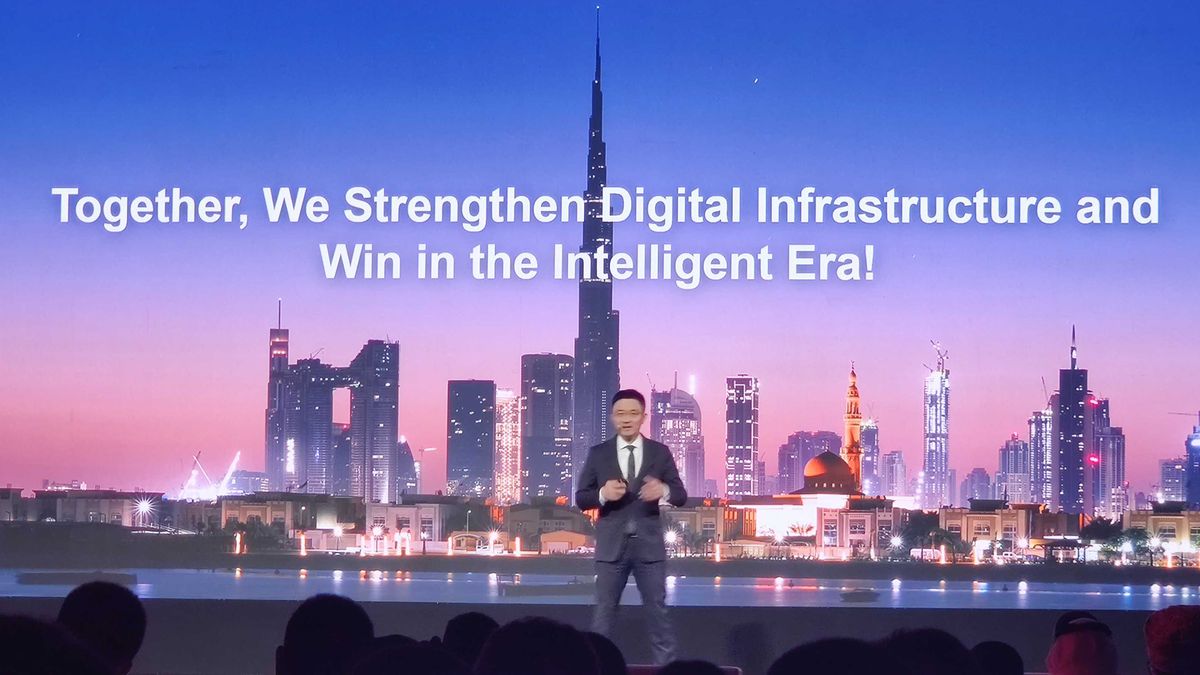Huawei targets ‘intelligent industrial transformation’ with AI-ready infrastructure

The tech sector has entered a new stage of digital transformation, according to Huawei, with AI, 5G, and quantum computing all fueling a new ‘intelligent transformation’ in industries around the world.
At Gitex Global in Dubai, Huawei hosted its Industrial Digital and Intelligent Transformation showcase, in which Lee Chen, corporate SVP and president of Enterprise Sales at Huawei, outlined what he described as the fourth industrial revolution.
“We are approaching a productivity revolution powered by the latest innovations brought about in the fourth industrial revolution,” he declared.
This transformation is underpinned by technologies such as AI, 5G advanced, cloud computing, and smart manufacturing through robotics. Chen noted that quantum computing, which some experts project could be a reality within the next five to ten years, will eventually play a role.
Huawei thinks it can be an integral part of accelerating this change with its full-stack network, storage, computing, and cloud capabilities.
As well as its AI-ready infrastructure, Huawei has also touted its open reference architecture for intelligent transformation projects, which it released last year and has already been used to develop a variety of industry-specific solutions.
Fourth industrial revolution frontrunners and laggers
Regardless of how one defines Industry 4.0, firms will be keen to harness the efficiencies made possible by the implementation of these technologies. Huawei teamed up with IDC to gauge where the global industry is along this transformation journey.
The Global Digitalization Index (GDI) released in late September, was established to quantify the digital transformation process of each country, measuring the progress of 77 countries using 42 indicators broken down into what it defines as the four crucial enablers for the intelligent transformation.
The GDI formalized these four enablers using the following categories: ubiquitous connectivity, digital foundation, green energy, and the nation’s policy ecosystem.
Ubiquitous connectivity refers to the country’s existing level coverage for fiber, 4G/5G, IPv6 deployments, as well as the IoT install base in the region.
The digital foundation category looks at the country’s investment in data centers, cloud, computing power, and advanced storage, all key pillars for the deployment of technology like AI.
The report also looked at each nation’s renewable electricity investment ratio and utilization rate, as well as its green energy policy. Other important factors that impact a country’s intelligent transformation include its investment in IT, E-commerce volume, STEM graduate ratio, and the number of startups it has.
The ‘frontrunners’ in the GDI were the US with a score of 78.8, followed by Singapore, Sweden, Finland, Denmark, and Switzerland, which all scored above 70. The UK, also considered a frontrunner under the GDI’s criteria was ranked at number 11 with a score of 66.8.
The ‘starters’ label was assigned to the worst-scoring 24 countries, with Tanzania, Bangladesh, Namibia, Uganda, and Ghana all scoring well below 30. The report put this down to gaps in the countries’ mobile broadband coverage, fiber access, and a need to “enhance connectivity in every aspect and give more people access to the digital economy”.
Accelerating the intelligent transformation
The report noted that over 170 countries have released national strategies for their digital and intelligent transformation, but are still struggling with questions about how to measure the ROI on investments they make into digital infrastructure.
This thinking goes against the results included in GDI, which found that every dollar of investment in digital transformation projects results in an $8 dollar return in terms of the country’s digital economy.
During his keynote presentation, David Shi, VP of ICT marketing and solution sales at Huawei, said the firm had identified two critical accelerators for digital and intelligent transformation across various industries.
These are boosting the popularization of the new technologies underpinning the new era of business transformation, and accelerating monetization.
The popularization piece is already well underway, and Huawei said it plans on continuing this journey using its ‘four easies’ strategy, which entails making their products and services easy to integrate, easy to access, easy to use, and easy to evolve.
For example, Shi talked about the importance of building standardized interfaces that are easy to customize.
“We cannot do everything [using Huawei] and benefit all customers in all industries, so that’s why it’s important we work with ecosystem partners, if we can realize these four ‘easies’ we believe, together with our partners, Huawei can really realize popularization.”
Source link











